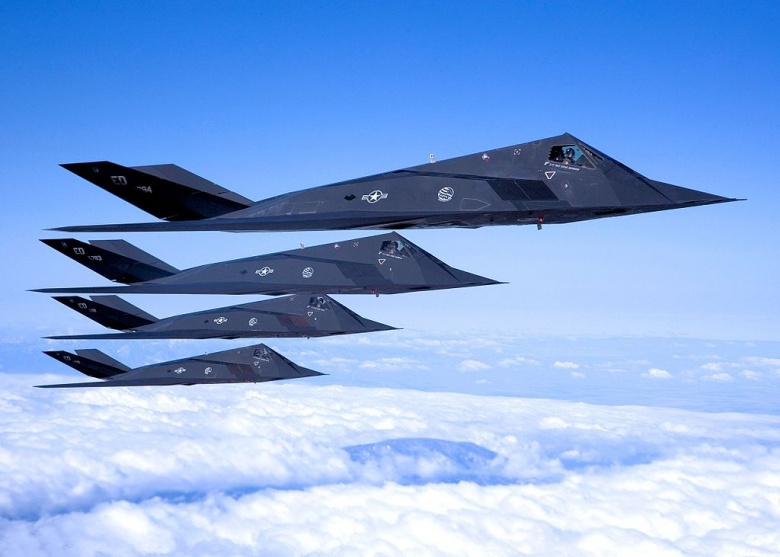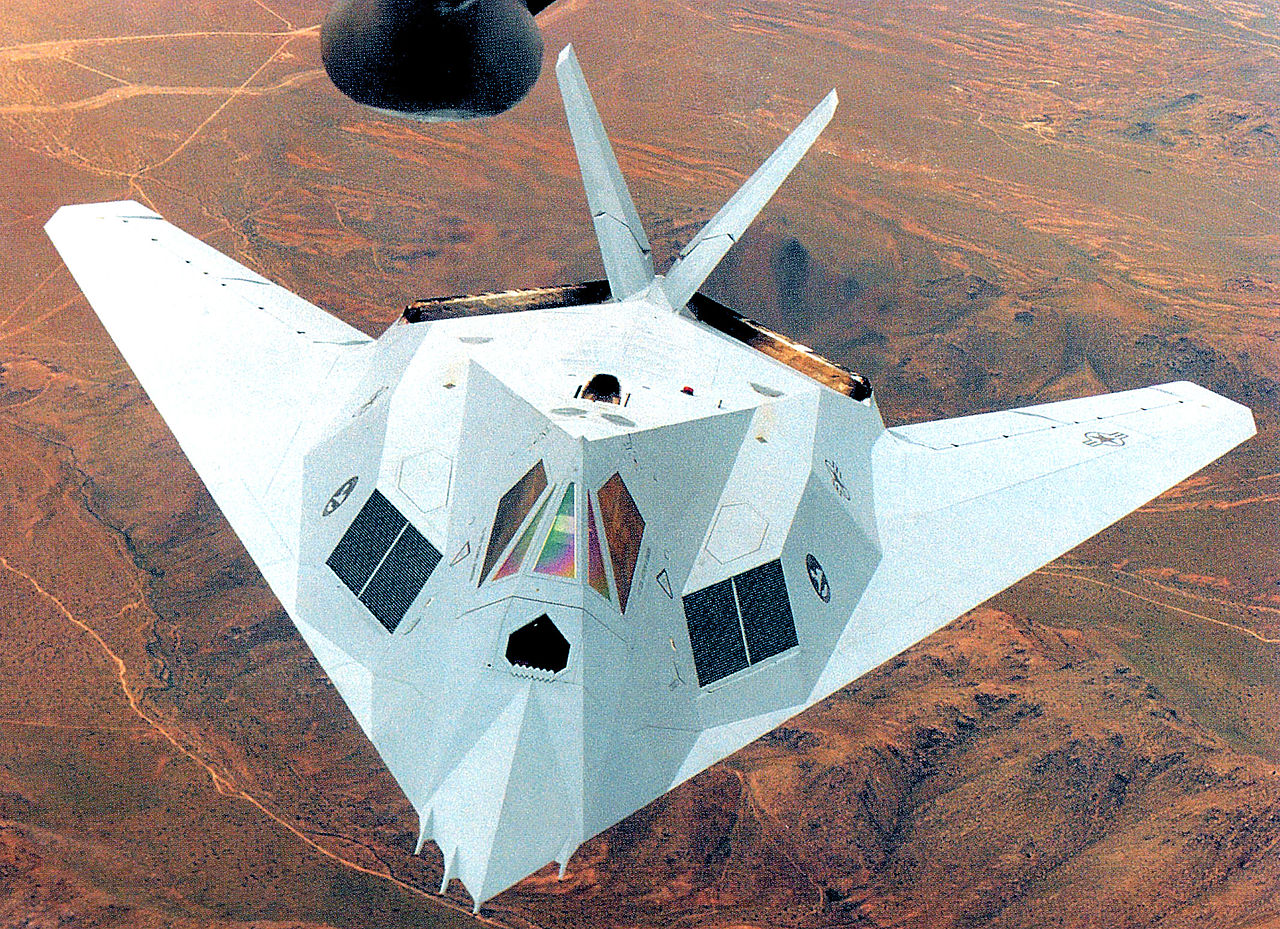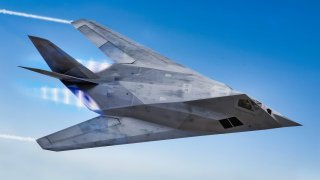F-117 Nighthawk: The Story of America's First 'Stealth Fighter'
Although the airframe’s combat-ready days are over, “retired” F-117 Nighthawks have been allegedly seen flying over Nevada in recent years.
Meet the F-117, the first stealth fighter for America: When aviation buffs think of American stealth airframes, the F-22 Raptor and F-35 Lightning II are usually the first to come to mind. While more modern fifth-generation fighters are incredible technological feats, neither fighter jet represents the first purpose-built stealth aircraft to fly in combat.
The U.S. Air Force’s F-117 Nighthawk in many ways served as a predecessor for the more recognizable fighters flying today. The Nighthawk’s true “stealth” capabilities are often debated, however, the airframe was designated as a stealth fighter by the U.S. Air Force upon its introduction into service.
Although the airframe’s combat-ready days are over, “retired” F-117 Nighthawks have been allegedly seen flying over Nevada in recent years.
Introducing the F-117 Nighthawk
Following the Vietnam War, the U.S. Air Force desired an aircraft stealthy enough to evade the Soviet Union’s increasingly advanced surface-to-air missiles (SAMs). For years, the development process that produced the F-117 fighter was a black project – a highly classified program that only a handful of Pentagon officials even knew about.
The jet’s nuanced design can be traced back to the research made by Russian scientist Pyotr Yakovlevich Ufimstev, whose work ultimately resulted in breakthroughs related to minimizing the radar cross-section of airframes. In fact, the “diamond-shape” concept that emerged from Ufimstev’s work was dismissed by the former USSR. The U.S., however, took the Russian scientist’s ideas seriously.
In the mid-1970s, the Defense Advanced Research Projects Agency (DARPA) tasked manufacturer Lockheed Martin to construct and test two stealth strike fighter jets. Following production and maiden tests of both prototypes, the decision was made to move forward with the F-117A, dubbed “Senior Trend” under the program.
The airframe was designed to be virtually invisible to radar and very difficult to spot with the naked eye. Between 1992 and 1990, Lockheed delivered 59 Nighthawks to the Air Force.
Two General Electric F404 engines powered the F-117, allowing the airframe to achieve high subsonic speeds. Ordnance-wise, the Nighthawk could sport the BLU-109B low-level laser-guided bomb, the Raytheon AGM-65 Maverick, and AGM-88 HARM air-to-surface missiles.
Events on the Ground
Due to the timing of the fall of the USSR, U.S. officials briefly believed the new airframe would no longer be needed as the Soviet threat ceased to exist. However, in 1989 the F-117 platform was put to use for the first time during Operation Just Cause in Panama.
A few years later, the Nighthawk played a critical role in the early stages of the Gulf War. Still secretive to the public at this point, the F-117 was used in significant missions targeting strategic Iraqi command and control installations as well as nuclear and chemical production facilities.

As outlined by Peter Suciu in an earlier piece, although Nighthawks represented only 36 of the stealth fighters deployed in Desert Storm – “accounting for just 2.5% of the total force of 1,900 fighters and bombers, but these flew more than a third of the bombing runs on the first day of the war. In total during the operation the F-117 conducted more than 1,250 sorties and dropped more than 2,000 tons of bombs during the missions that lasted a combined 6,900 hours!”

While the F-117 platform achieved some success in the Gulf War, the jet suffered to carry out its invincibility promise when a Nighthawk was downed by a missile in Yugoslavia. Nighthawks were officially retired in 2008, however, periodic “spottings” of the airframe suggest that it is still being put to use in some form of training exercises.
About the Author
Maya Carlin is an analyst with the Center for Security Policy and a former Anna Sobol Levy Fellow at IDC Herzliya in Israel. She has by-lines in many publications, including The National Interest, Jerusalem Post, and Times of Israel.
Main image via Shutterstock. Intext images come from Wikicommons.


